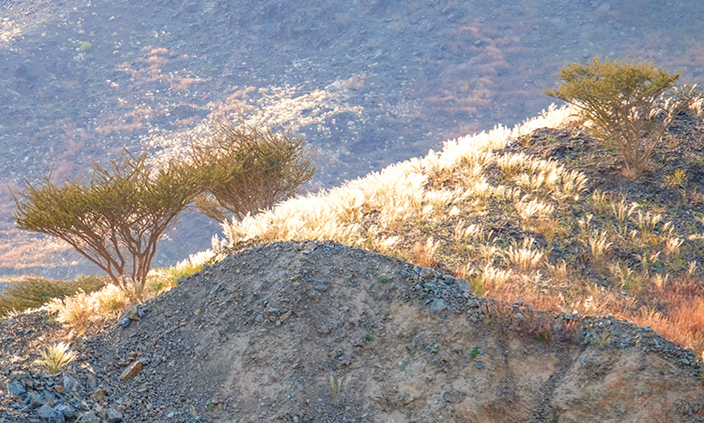Scientific Name: Acacia tortilis
Arabic Name: Samr
Botanical Description
Grows up to 12m high; single or several stems branching from the base of the tree; crown wide; rounded or flat topped.
Bark is grey-brown, rough and flaky. Spines are paired, straight and white, growing up to 8cm long, alternating with shorter, hooked spines up to 5mm long.
Leaves 2-10 pinnae. each with 6-20 pairs of leaflets.
Flowers
White or pale yellowish-white, fragrant with round heads.
Fruits
Pods spirally twisted; constricted between seeds and splitting when mature.
Flowering
From spring until early summer (April to June).
Fruiting
July to August.
Habitat
Gravel and sand plains, wadi banks, mountain slopes, and mountain plains (up to medium elevations).
Distribution
Common and widespread in the eastern part of the UAE.
Globally
Widespread in Africa, from South Africa northwards to Algeria and Egypt, extending to Asia and southern Arabia; Acacia tortilis cultivated in India and Pakistan.
Uses
Extensively browsed by camels, goats and wildlife, including oryx and gazelles. Pods and leaves have a good level of digestible protein and energy as well as being rich in minerals. Seeds are high in crude protein and phosphorus, with flowers dropping from the trees providing additional forage. The wood makes an excellent fuel.

